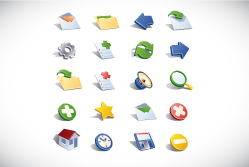Seven email fundamentals we all forget sometimes
Seven email fundamentals we all forget sometimes
May 28, 2012
 Ding! You've got mail. Chances are you’ve been sending and receiving email for years. And that means the chances are also high that you’ve fallen into a routine when it comes to composing a new message.
Ding! You've got mail. Chances are you’ve been sending and receiving email for years. And that means the chances are also high that you’ve fallen into a routine when it comes to composing a new message.
We all make email mistakes sometimes, so here’s a quick refresher of seven email fundamentals. Follow them and you’ll send polite, effective emails – every time.
- Start and finish courteously. Always open with a friendly greeting and end with an appropriate signoff. They make emails more personal and – particularly if you’re asking someone to do something for you – less demanding. Always double check you’ve spelt the recipient’s name correctly.
- Get to the point. Nobody wants to read an email essay or wade through 500 words to find the ten that matter. Keeping your messages short and sweet shows you have respect for the recipient’s time.
- Pause for a moment before sending. There’s no undo option for emails and no way to shred them. So always think carefully before sending a sensitive, confrontational or emotional email, particularly if it’s going to several people. (Setting up your email system to delay emails for a minute or two helps eliminate any ‘I shouldn’t have sent that’ moments.
- Check your email carefully. When you’re in a hurry it’s easy to type the email and hit send. Wait! Use the spell check, read it through and make sure it all makes sense. If you’re broaching a tricky subject, as a co-worker to read what you’ve written.
- Limit acronyms and emoticons. Does the smiley face really have a place in the workplace? The answer probably depends on the nature of your company, but try and resist the temptation to pepper your messages with them. The same goes for common internet-acronyms like LOL.
- STOP SHOUTING! Whoops, sorry about that. Nothing screams impolite and abrasive like an email written all in uppercase. Use proper punctuation and capital letters where appropriate. But don’t write anything all in uppercase.
- Avoid using ‘reply all’. This feature sends a reply to everyone who the original email was sent to. It’s useful occasionally, but most people use it because it means they don’t have to think about who should actually receive their email. It clogs up people’s inboxes with irrelevant messages, contributing to an email overload nightmare.
Have you ever made any embarrassing email mistakes (we’ve all done it once or twice!). What are your tips to stay on the right side of email etiquette? Leave a comment to let us know.
- When it comes to email replies, is faster better?
- Ten ways to use email effectively
- Email blunders you don’t want to make
This post was written by Roxanne McCann and edited by John McGarvey




Comments
A good reminder to us all and very much in line with a recent post on Inbox Productivity (http://buff.ly/PakJe2). It's a goal for all of us to use Email to its most efficient but I guess the volume received on a daily basis makes it difficult to achieve :-(
Add a comment